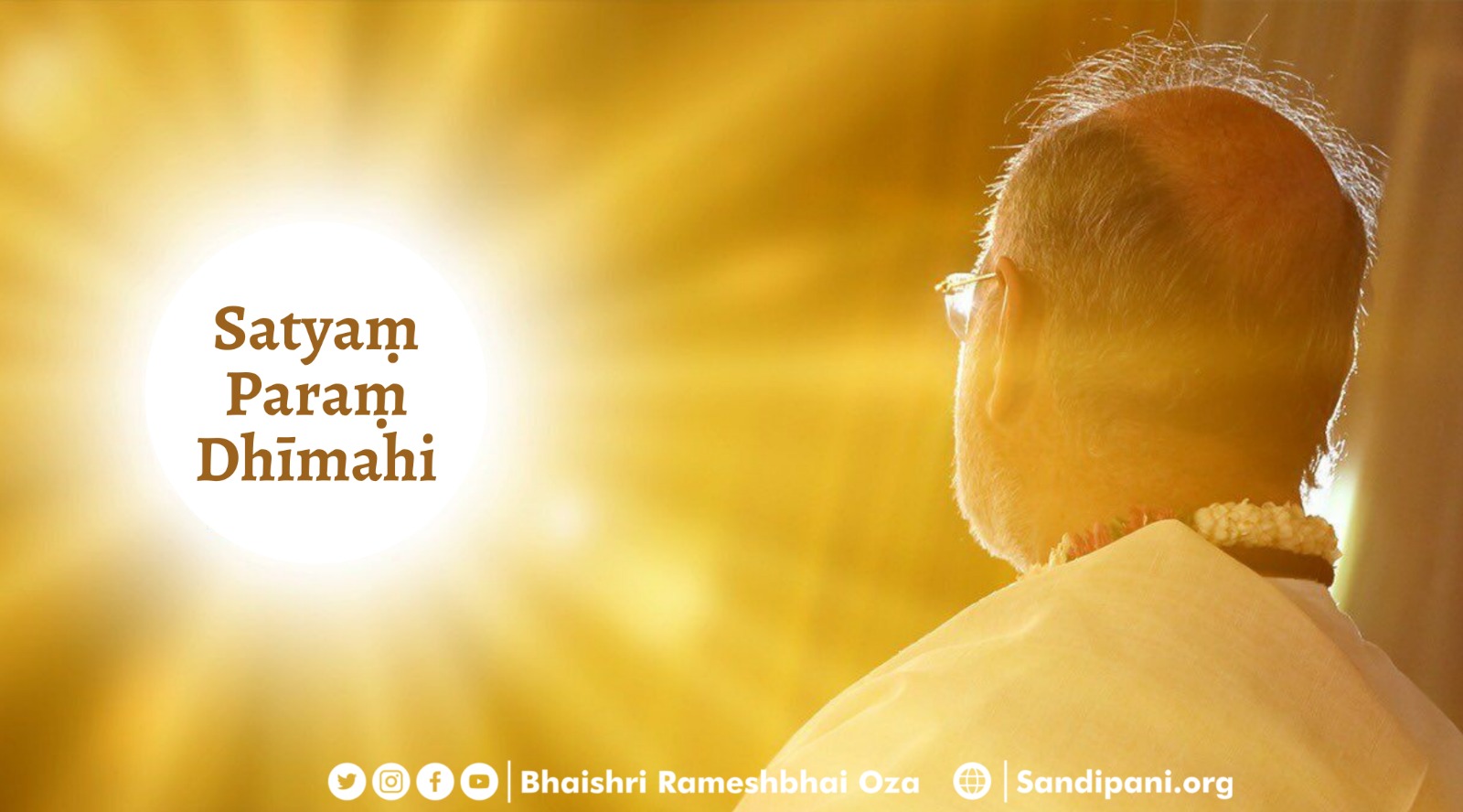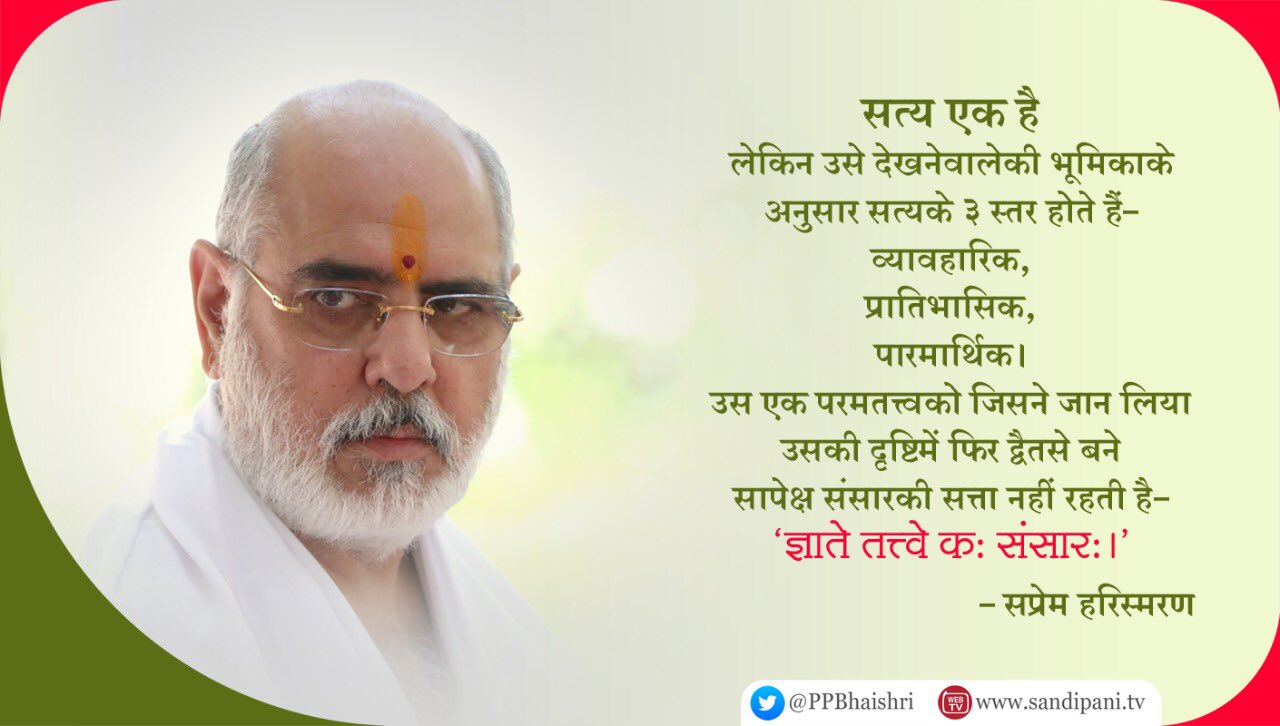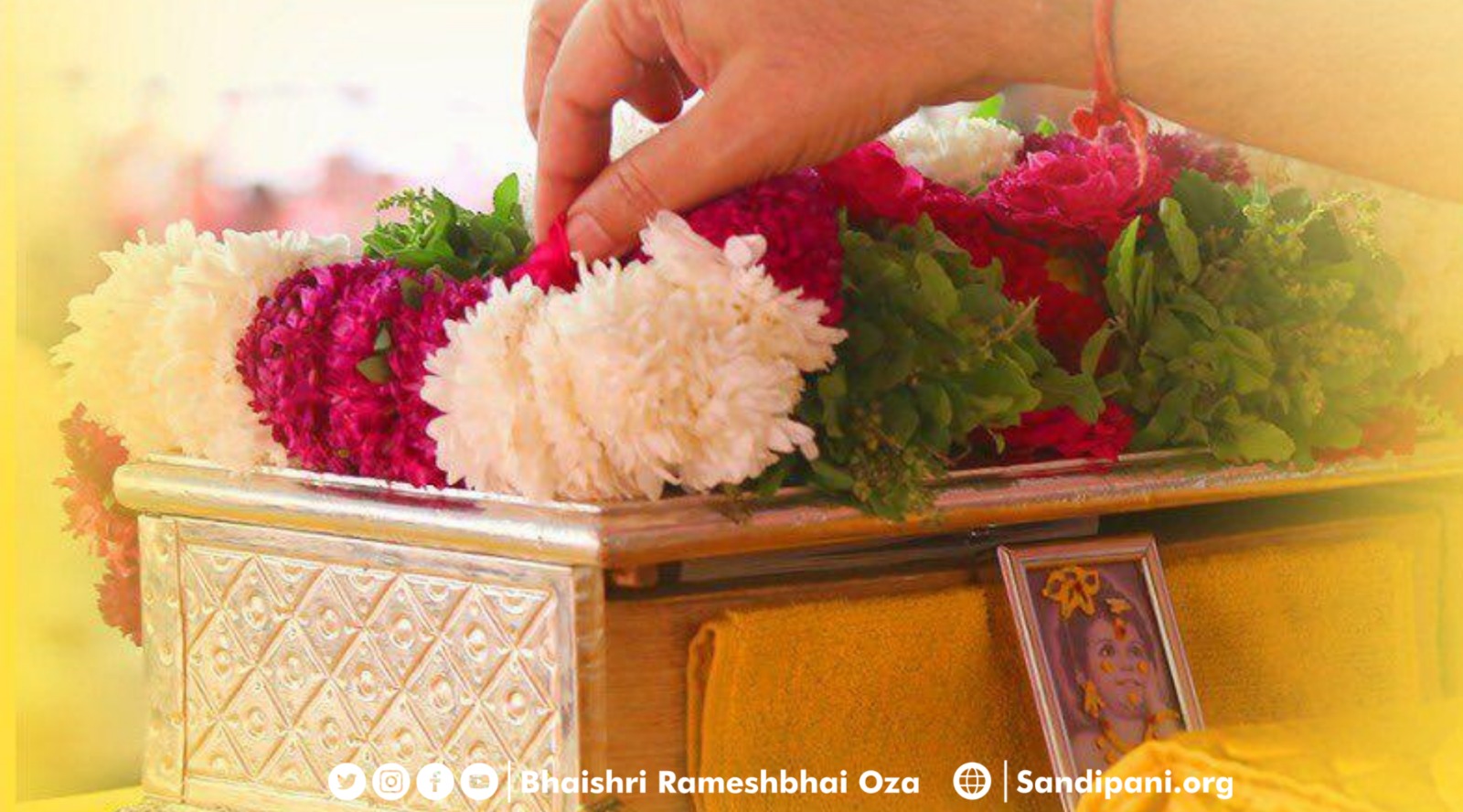Knowledge of That Supreme Truth

जन्माद्यस्य यतोऽन्वयादितरतश्चार्थेष्वभिज्ञः स्वराट्
तेने ब्रह्म हृदा य आदिकवये मुह्यन्ति यत्सूरयः ।
तेजोवारिमृदां यथा विनिमयो यत्र त्रिसर्गोऽमृषा
धाम्ना स्वेन सदा निरस्तकुहकं सत्यं परं धीमहि ॥ १.१.१ ॥
श्रीमद्भागवत महापुराण १.१.१
janmādyasya yato’nvayāditarataścārtheṣvabhijñaḥ svarāṭ
tene brahma hṛdā ya ādikavaye muhyanti yatsūrayaḥ ।
tejovārimṛdāṃ yathā vinimayo yatra trisargo’mṛṣā
dhāmnā svena sadā nirastakuhakaṃ satyaṃ paraṃ dhīmahi ॥
Śrīmad Bhāgavata Mahāpurāṇa 1.1.1
📖 जिससे इस जगत् की सृष्टि, स्थिति और प्रलय होते हैं – क्योंकि वह सभी सद्रूप पदार्थों में अनुगत है और असत् पदार्थोंसे पृथक् है; जड नहीं, चेतन है; परतन्त्र नहीं, स्वयंप्रकाश है; जो ब्रह्मा अथवा हिरण्यगर्भ नहीं, प्रत्युत उन्हें अपने संकल्पसे ही जिसने उस वेदज्ञानका दान किया है , जिसके सम्बन्ध में बड़े – बड़े विद्वान् भी मोहित हो जाते हैं; जैसे तेजोमयसूर्यरश्मियोंमें जलका, जलमें स्थलका और स्थलमें जलका भ्रम होता है, वैसे ही जिसमें यह त्रिगुणमयी जाग्रत् – स्वप्न – सुषुप्तिरूपा सृष्टि मिथ्या होनेपर भी अधिष्ठान – सत्तासे सत्यवत्प्रतीत हो रही है, उस अपनी स्वयंप्रकाश ज्योतिसे सर्वदा और सर्वथा माया और मायाकार्यसे पूर्णतः मुक्त रहनेवाले परम सत्यरूप परमात्माका हम ध्यान करते हैं ॥ १ ॥
📑 श्रीमद्भागवत महापुराण १.१.१
☀️ Did-You-Know?
- The Śrīmad Bhāgavatam commences with the invocation ‘satyaṃ paraṃ dhīmahi’ (We meditate upon That Supreme Truth) and also concludes with the same phrase ‘satyaṃ paraṃ dhīmahi’. This indicates that the subject which is found at the start and at the end is inferred to also exist in the midst – hence this opening verse in fact reveals the subject of the entire scripture – That Supreme Reality, known as ‘Paraṃ Satya’, or, Tattva.
- What is that Supreme Truth? Satya is known to be of three stages – interactive, empirical reality (vyāvahārika satya);Apparent or superimposed reality (prātibhāsika satya); absolute reality (pāramārthika satya). That Truth which is not subject to change, modification, or degeneration – that which exists in all three dimensions of time (past, present and future). ‘trikālā’bādhitavyaṃ satyatvam.’ This is supreme truth which is succinctly and completely conveyed in this single verse.
(a) vyāvahārika satya – to see a rope for what it is and utilise it accordingly;
(b) prātibhāsika satya – to mistakenly see a Snake in the rope and be affected by what appears to be true, but is in fact, not;
(c) pāramārthika satya – That one eternal Truth which pulsates in all of existence.

3. This first verse of the 18,000-versed Śrīmad Bhāgavata Mahāpurāṇa is attributed to Bhagavāna Veda Vyāsa (also known as Kṛṣṇadvaipāyana or Bhagavāna Bādarāyaṇa), an incarnation of the Lord who is the very embodiment of knowledge. A unique quality of the language of Bhagavāna Veda Vyāsa is his ability to see That Supreme Truth as clearly as a gooseberry upon the palm (karāmalakavat) enables him to speak with both the skill of elaboration (vyāsa bhāṣā) and/or the skill of synopsis (samāsa bhāṣā).
4. Vyāsaji first classified the one eternal Veda (which is not of human authorship but divine in origin) into four vedas and created the disciplinic system for authentic continuity of vedic study. For those whose intellect is as yet ineligible to grasp the subtle truth of the Vedas, he then authored the eighteen purāṇās and itihāsa (Mahābhārata) which convey the same philosophy (darśana) through metaphors, allegories, character portrayals, hymns of praises and songs.
5. Whilst there are various pre-requisite qualifications (self-development and preparation) required to study the culmination of the Vedas, known as ‘Vedānta’; the Śrīmad Bhāgavata Mahāpurāṇa is filled with the pure ghee of Vedānta served as a digestible and delicious sweet Ladoo – which there are no pre-requisites to imbibe!
6. This is indicated by the first phrase of the first verse which does not begin with the first Brahma Sūtra but rather the second, which directly dives into the definition of that Supreme. The Brahma Sūtras (555 Aphorisms of Divinity) are an important text also authored by Bādarāyaṇa Veda Vyāsa, and are part of the three canonical texts of theology key to Sanātana Dharma. This validates the Vedic authority of the Śrīmad Bhāgvatam.
जन्माद्यस्य यतः ॥ १.१.२ ॥
janmādyasya yataḥ || 1.1.2 ||
It is That from which the birth etc. of this world arises
7) This knowledge of the Supreme Truth (Paraṃ Satya) has been passed down by the Lord Himself, in disciplinic succession,
- starting with Nārayaṇa, who gave this knowledge to Brahmāji (by way of mental transmission);
- thereafter from Brahmāji to Devarṣi Nārada (in the form of four spoken verses called the Catuḥślokī Bhāgavata);
- thereafter spoken by Nāradaji to Veda Vyāsa as four seed verses and advised to elaborate;
- Śrī Veda Vyāsaji accordingly expands upon these four verses to write eighteen thousand saṃskṛta verses (written in samādhi bhāṣa, or in a state of direct realisation of the divine, which requires divine grace to be understood) and teaches the same to his Paramahaṃsa son, Śrī Śukadevaji;
- Śukadevaji Mahārāja then confers this supreme knowledge upon King Parīkṣit in a span of seven days. This knowledge of the supreme removed the veil of ignorance that led to forgetfulness of his true Self and established him in a steady state of fearlessness, peace and bliss.
8) This opening verse of the first of twelve cantos (skandha) of the Śrīmad Bhāgavata Mahāpurāṇa is authored in a saṃskṛta meter called “śārdūlavikrīḍita chanda” (शार्दूलविक्रीडित छन्द) and indicates the roar of the Lion, who is the King of the Jungle, terrifying the deer of sins in the jungle of this material world.

❔What language is the Śrīmad Bhāgavata first written in?
🔔 Share your answer or a fun-fact in the comments section below.
#ShrimadBhagavat #Mahatmya #ShlokOfTheWeek #SVN_SOW #ScriptureOfLove
Series by Rishi Harshitbhai Shukla – @HarshitbhaiShukla;
Nimishaben Sadhu (India);
Rajeshbhai Purohit (UK).
About this Article
This is a part of an ongoing series to learn a Shlok a week from the Purushottam Maas Shrimad Bhagavat Katha by Pujya Bhaishri Rameshbhai Oza.
We hope devotees are able to savour a few fun facts on these verses with an enhanced interest for the context and divine nuances through this series.
This Article is the 2nd in the ‘Shlok of the Week’ Series.